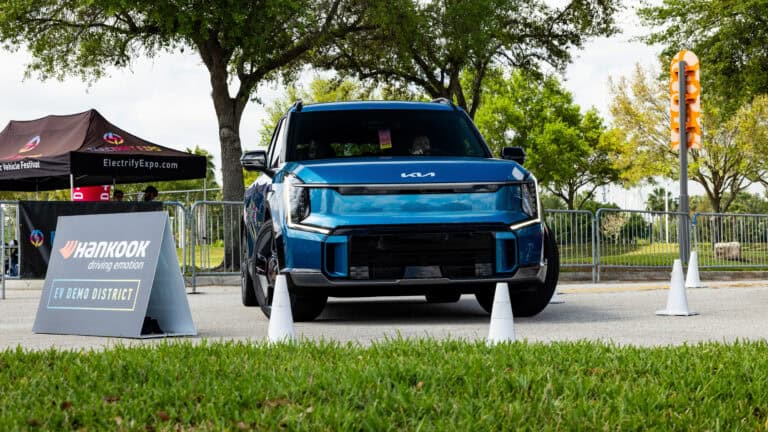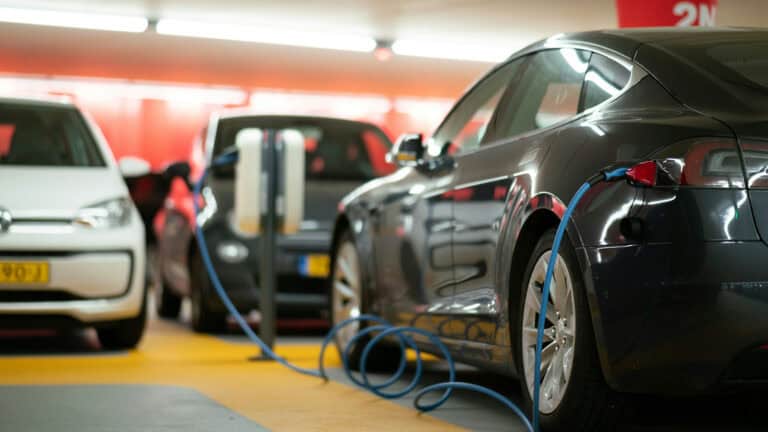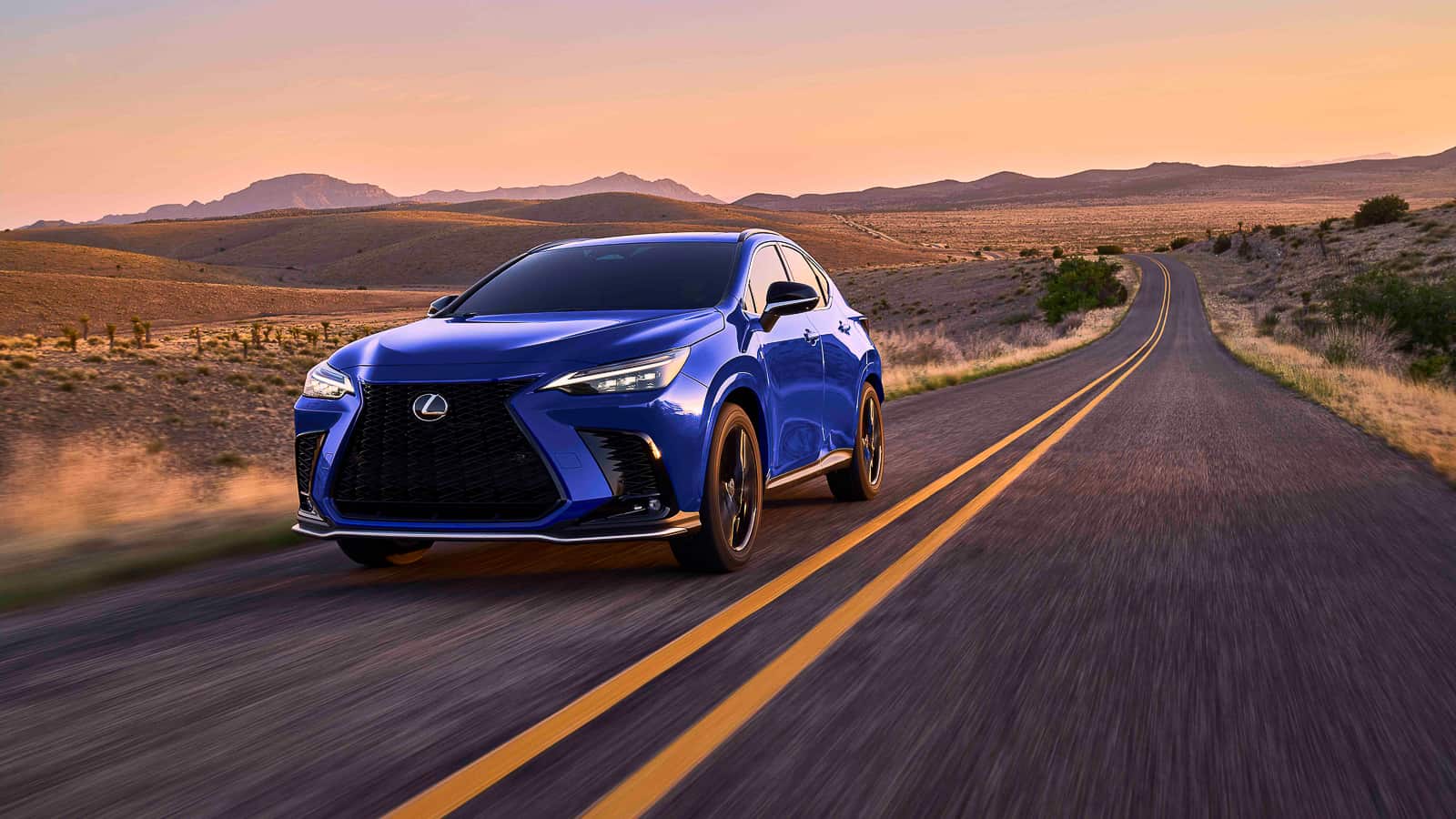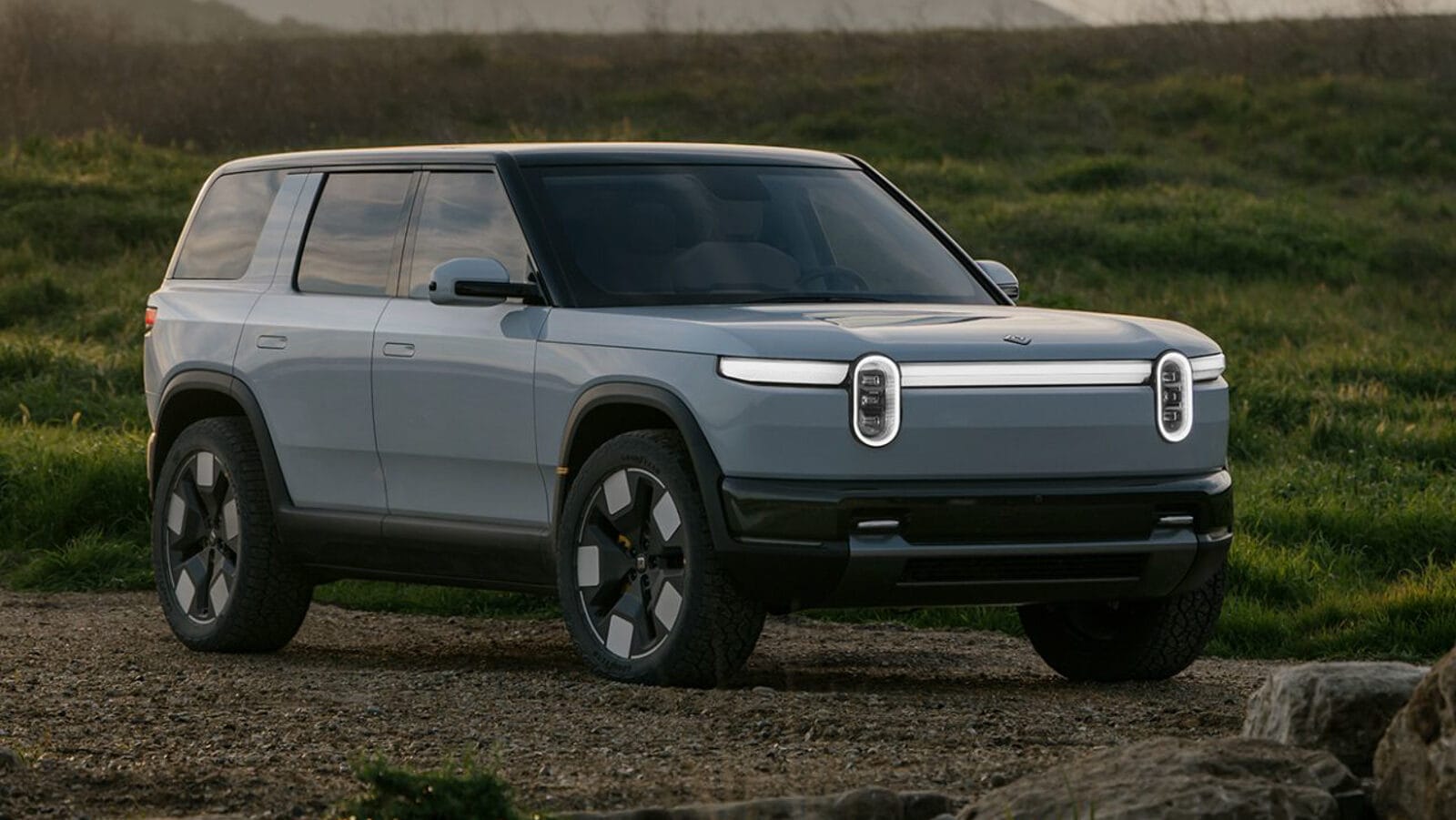With record cold blasting most of the US this week, a lot of first time EV buyers are facing down their first ever electric winter.
Let’s get this out of the way up front: yes, you can drive an EV in the cold and snow. What’s more, it’s a lot like driving an ICE car in the snow — but the experience can be different, for two reasons. The first is that electric cars deliver all of their torque at 0 rpm. Max power now definitely makes for great fun at the drag strip, but isn’t necessarily what you want on a slick, icy road. The second is that extreme weather, whether hot or cold, has a negative impact on your vehicle’s efficiency — which means your EV will have a shorter driving range, even with a full “tank” of electrons in your battery.
And, yes – extreme weather also has a noticeable, negative effect on fuel economy in ICE-powered cars, but most people don’t actually check their range in a gas car, so an extra stop for gasoline or diesel here or there is usually no big deal. The same can be true in an EV, but if you have to stop one exit earlier than usual in an EV it could mean the difference between a 10-minute fast charge or a stop that could take hours.
So, what steps can you take to make sure that your holiday road trips in an EV are great experiences? Read on.
Get Your EV Ready for Winter

1. Winter Tires — if you experiences freezing rain, sleet, or snow, investing in winter tires makes a ton of sense. If you live somewhere that gets lots of snow, for months on end, winter tires are the must-have driving accessory.
If you’ve never driven a car with winter tires in the ice, you’ll have to trust us when we tell you that it’s a radically improved experience. The traction, the braking, the turning — every aspect of your car’s handling is improved, and the difference between “summer” tires and “winter” tires is provably more dramatic than the difference between two-wheel drive and all-wheel drive. If you don’t believe that, check out this video from Tyre Reviews that compares an AWD BMW SUV with standard tires vs. that same BMW two-wheel drive and winter tires.
AWD vs. 2WD + Winter Tires
As you can see in the video, AWD doesn’t negate the laws of physics. You can still get stuck in a snow drift, spin out on an icy off-ramp, or skid past a stop sign if you don’t respect the weather — and putting good winter boots on your car is just as important putting proper boots on your feet.
2. Windshield Wipers and Fluid — a fresh set of wipers can make a dramatic difference in visibility, especially in heavy sleet and freezing rain storms. If you haven’t changed your wiper blades recently, they may be well past their best. Keep in mind, too, that wipers tend to degrade gradually over time, so you might not realize how bad yours really are.
To make sure you have superior visibility in the worst winter weather conditions, consider specialized “winter” wiper blades like Bosch Snow Drivers or Michelin Fahrenheit wipers. The best thing about new wipers is that – assuming you bought wipers designed to work with your EV – they’re relatively easy to install yourself.
Finally, make sure your car’s wiper fluid is rated for winter use — which is a fancy way of saying, “won’t freeze, even if it gets super cold.” You can take that a step further by replacing your conventional wiper fluid with a de-icer, like this one from Prestone, which the company claims is, “formulated to melt ice & frost fast, down to -34°F,” and work without harming your car’s factory washer system for a crystal-clear view of the road ahead, all winter long.
3. Proper Floor Mats — this one might seem like an optional addition to your winter prep list, but one quick look at a Tesla wiring diagram (below) should be enough to tell you — even if you’re not entirely sure what you’re looking at — that there’s a lot of expensive electronics under your carpet.
Tesla Model 3 Wiring Diagram
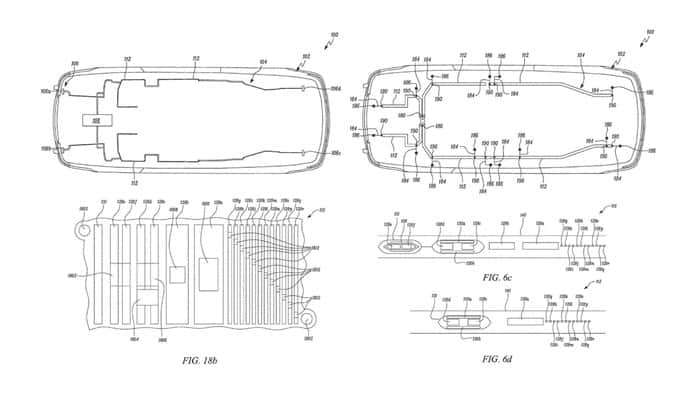
What’s more, your EV’s expensive electronic bits do not play well with whatever salt/ice/mud slurry you’ might be’ll be dragging into it. As such, a set of form-fitting, waterproof floor mats are a must-have.
If you’re not sure where to get those, the Tesla online store has mats that are designed to keep your carpet (and the wiring underneath it) dry throughout the winter. For other EVs, check with your local dealer for an OEM option (the Volvo Protection Package mats are excellent), or check out a set of WeatherTech mats, which the company claims are made with the help of 3D laser scanning for a super-precise fit on just about any car.
4. The Car Wash is Your Friend — remember that line about all the expensive wiring and electronics under the carpet? There’s a whole lot more expensive stuff underneath your car, and every bit of it — from the suspension control arms to the brake lines to the axle boots to the batteries themselves — is better off not caked in salt and mud.
Some dealer groups will offer free car washes for life as a perk of buying your car from them, so take them up on the offer and have them wash the car at least every other week while there’s salt on the roads. If you’re driving a Tesla or Lucid or Rivian, however, you obviously did not go through a dealer, so you’ll have to find a local car wash. The good news there, however, is that a monthly membership at those is usually reasonably priced, and should net you the same benefit.
Get Yourself Ready for Winter

Now that your EV is ready for winter driving, it’s time to get yourself ready for winter driving by changing the way you think about, and use your car. And no, that doesn’t just mean easy on the gas, brake early, and steer smoothly (though, that’s certainly important). What it means is that you should actively consider some of the ways you can make the most of your EV’s capabilities, and remember that a few minutes of planning before you “hit the road” could save you hours of aggravation later on.
1. Precondition Your EV Battery — preconditioning your car’s battery is crucial to driving your EV in snow. You can think of it a bit like warming up a gas engine, if that helps, and – if your car has this feature – you can usually activate and control it using your car’s infotainment system or an app.
What’s more — if you can power on your car while it’s still plugged into its charger, you can precondition the battery, heat your seats and steering wheel, and get the cabin nice and cozy without negatively impacting your range — the electricity you’re using to warm up the car is effectively being drawn from the outlet, not the car’s battery pack!
2. Get the Right App — while we’re on the topic of apps, the right apps can absolutely make or break your EV ownership experience. Companies like Tesla and Volvo have great apps to help you locate and even precondition your car to maximize range, but even Tesla’s station-finding app can leave owners frustrated if they don’t put it to good use.
For trip planning, we strongly recommend Chargeway – that’s because Chargeway’s trip planner is more than just a station finder. You tell it the exact vehicle you’re driving, plug in where you’re going, and the app calculates the best places to stop in order for you to minimize charge time. The app also also lets you enter in the current temperature and your average driving speed, then uses some serious, big-brain math to calculate your real world driving range and deliver a much, much more accurate view of the trip you’re about to embark on than you’ll get with other apps.
Chareway Screencaps
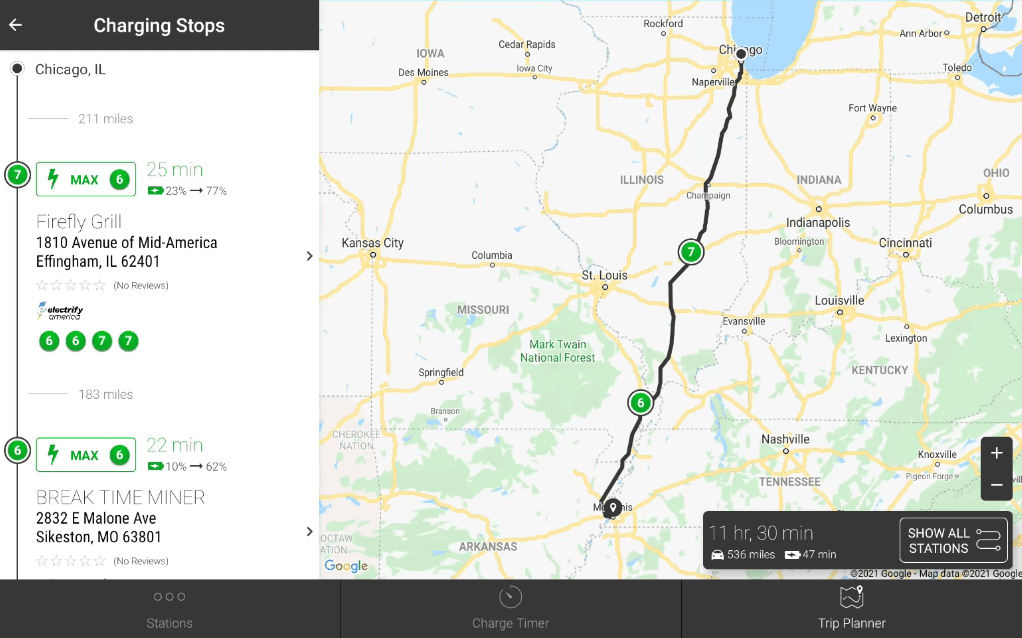

3. Be “Heat Smart” — internal combustion engines generate a ton of excess heat, so redirecting some of that heat into the cabin to stay warm in the winter is relatively easy. An EV doesn’t, so if you want to drive your EV in extreme cold conditions, you need to be a little bit “heat smart.”
“Using the car’s heater is a pretty inefficient use of your electricity,” writes Tom Barnard over at Electrifying. “You don’t get many battery-operated heaters to use around the home, as it’d take an awful lot of AAs to warm anything … try and heat yourself rather than the empty space around you … (that means) turning down the car’s main heater and cranking the heated seats and steering wheel up if you have them. Likewise, if you have a heated windscreen, use that rather than the blower to defrost.”
4. Plug In — when you get to where you’re going in your EV, try to find a place to plug it in and charge. Even if this is a slow, “level 1” charge from a regular outlet, this is a case where something is better than nothing, and it will pay dividends when it’s time to precondition your car for the long ride home.
If you follow all these winter driving tips, you’re sure to have a safe and happy winter driving experience behind the wheel of your EV. And, if you have tips you’d like to share, simply scroll on down to the comments and let us know!

ORIGINAL CONTENT FROM ELECTRIFY NEWS.
FTC: We use income-earning auto affiliate links. Learn more.













